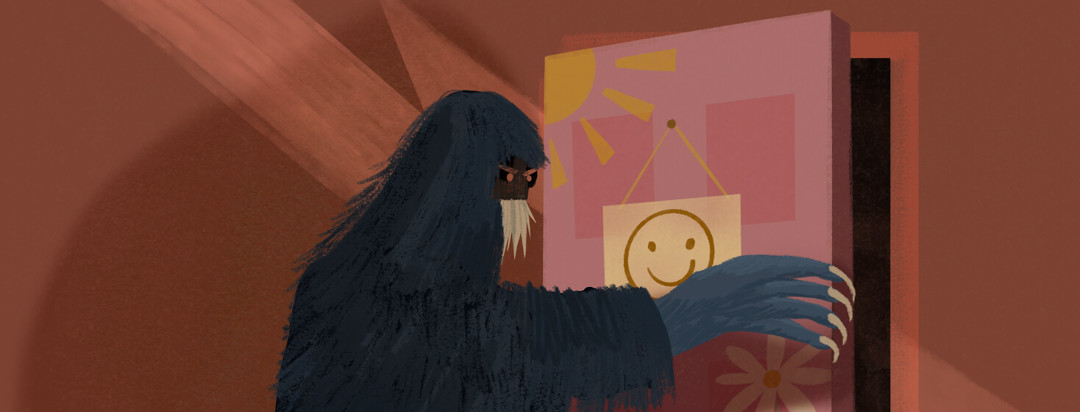When the Migraine Monster Touches Our Children: Part 1
I will never forget the day that my oldest son, Joel, called me into his room and said: “Flashy lights, mommy! I see flashy lights!” He was not quite 9 years old and my heart sank. At that time, I knew little about the hereditary risk of migraine but quickly found myself on a steep learning curve. Less than two years later, I went through the same heartbreak with my second son. The disease took on a new face, a more personal and challenging face.
Now it wasn’t something that I just battled with personally, endlessly, and often ineffectively. Rather, it was now directly hurting two of my children, and it was devastating to watch. If you have children with migraine you will know exactly how that feels. So how do we navigate those years of childhood migraine? What is it like for our children to grow up with unpredictable pain, nausea, and visual disturbances? How are our children able to thrive, not just survive?!
The dark side of migraine
It’s important to talk with our children about the disease itself, treatment options, and coping strategies. However, there is so much more that we can communicate. Things that can help them better manage life with migraine. One of the things that is often not talked about is what I refer to as the “dark side” of migraine. The vast majority of people who have chronic pain also deal with depression and/or anxiety. Emotions are impacted not only by the unpredictable and incapacitating symptoms of migraine but also by many of the medications used to treat it.
As much as adults often don’t talk about this, it is frequently even harder for children to share. Recently I talked to my oldest son, Joel, about his experiences. He explained, “Honestly, the migraine attacks would send me into a state of depression that was very dark and gloomy. They made me feel like I had sunk into the pit of the world.” At their worst, during his teens, it was very difficult to manage. Joel is far from alone in this! How can we learn to talk openly about the emotional impact of childhood pain? Where can we go to find strategies that may help?
Not an easy road
Besides the psychological challenge of living with pain as a child, the road to treatment for migraine is especially fraught with difficulties for children. Most medications are not tested on people under 18 and often little is known about how they will respond. It becomes essential to treasure the good memories while being honest about those which are more like trying to scale Mount Everest in the middle of a storm. The consequences of both the migraine attacks themselves, as well as the side effects of medications, can be huge: Dropping out of sports, minimal social interaction, lower grades, and frequent absences from school to name just a few. It’s not uncommon for some children to need to pursue alternative avenues for education.
For those new to the disease, figuring out how to manage the pain and symptoms is hard enough. Now add to that all the other challenges being faced, including the emotional impact of unpredictable pain. One image that is burned into my mind is a picture Joel drew when he was frequently going to the hospital. The picture was of his hand and marked on it were all the places he had been “stuck” with an IV needle. As traumatic as these experiences are for us, they are often even more traumatic for our children. The result can easily be overwhelming and often is.
Thrive, not just survive
So how can we help our children to thrive rather than just survive during those early years? Joel encourages parents to affirm their children in activities and subjects at school that they enjoy. Also, to be aware of the signs of depression, and to talk openly with teachers and school counselors about the challenges being faced. Understanding that there are accommodations available throughout the school years is crucial to the physical and mental health of our children.
However, even that is not necessarily an easy path to navigate. It can be challenging to know when the right time is to formalize requests, as well as to figure out exactly how to do that. The Coalition for Headache and Migraine Patients (CHAMP) has created guides for parents whose children have migraine. These are invaluable and can be found on their new website: Migraine At School Guide by CHAMP
A better future for our children and grandchildren
It’s essential for parents to be educated and continually learning about new options. Without current, child-centered medical information it is so much harder to bring about change, and pediatric migraine is one area that change is badly needed. Honestly, don’t be afraid to “get angry” that migraine has so little research and too few doctors certified in treating it.
It’s time for migraine to no longer be dismissed or ignored. That means including strategies and treatments for those under 18 as an essential part of pediatricians’ education! Together, as we raise awareness in society, we will start to see change. Change in treatments, change in education, better understanding, and a better future for our children and grandchildren.
Do your children have migraine? If you could share one thing with their doctors, what would it be? What would you say to other parents? What are some of the ways that may help children to thrive and not just survive?

Join the conversation